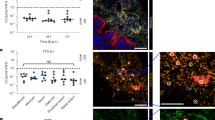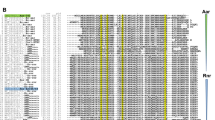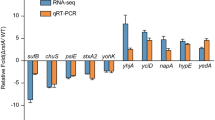Abstract
The autoinducer-2 (AI-2) molecule is produced by many bacterial species, including various human gastrointestinal (GI) tract commensal bacteria, and has been proposed to be involved in interspecies communication. Because pathogens are likely to encounter AI-2 in the GI tract, we studied the effects of AI-2 on various phenotypes associated with enterohemorrhagic Escherichia coli (EHEC) infections. AI-2 attracted EHEC in agarose plug chemotaxis assays and also increased swimming motility, as well as increased EHEC attachment to HeLa cells. The molecular basis underlying the stimulation of EHEC chemotaxis, motility, and colonization by AI-2 was investigated at the transcriptome level using DNA microarrays. We found that exposure to AI-2 altered the expression of 23 locus of enterocyte effacement (LEE) genes directly involved in the production of virulence determinants, as well as other genes associated with virulence (e.g., 46 flagellar/fimbrial genes, 24 iron-related genes), in a temporally defined manner. To our knowledge, this is the first study to report AI-2-mediated regulation of EHEC chemotaxis and colonization, as well as temporal regulation of EHEC transcriptome by AI-2. Our results suggest that AI-2 is an important signal in EHEC infections of the human GI tract.





Similar content being viewed by others
References
Bansal T, Englert D, Lee J, Hegde M, Wood TK, Jayaraman A (2007) Differential effects of epinephrine, norepinephrine, and indole on Escherichia coli O157:H7 chemotaxis, colonization, and gene expression. Infect Immun 75:4597–4607
Boyce TG, Swerdlow DL, Griffin PM (1995) Escherichia coli O157:H7 and the hemolytic-uremic syndrome. N Engl J Med 333:364–368
Chen X, Schauder S, Potier N, Van Dorsselaer A, Pelczer I, Bassler BL, Hughson FM (2002) Structural identification of a bacterial quorum-sensing signal containing boron. Nature 415:545–549
Clarke MB, Sperandio V (2005) Events at the host-microbial interface of the gastrointestinal tract. III. Cell-to-cell signaling among microbial flora, host, and pathogens: there is a whole lot of talking going on. Am J Physiol Gastrointest Liver Physiol 288:G1105–1109
Collier-Hyams LS, Neish AS (2005) Innate immune relationship between commensal flora and the mammalian intestine. Cell Mol Life Sci 62:1339–1348
DeLisa MP, Wu C-f, Wang L, Valdes JJ, Bentley WE (2001) DNA microarray-based identification of genes controlled by autoinducer 2-stimulated quorum sensing in Escherichia coli. J Bacteriol 183:5239–5247
Domka J, Lee J, Bansal T, Wood T (2007) Temporal gene-expression in Escherichia coli K-12 biofilms. Environ Microbiol 9:332–346
Elliott SJ, Wainwright LA, McDaniel TK, Jarvis KG, Deng Y, Lai L-C, McNamara BP, Donnenberg MS, Kaper JB (1998) The complete sequence of the locus of enterocyte effacement (LEE) from enteropathogenic Escherichia coli E2348/69. Mol Microbiol 28:1–4
Frenzen PD, Drake A, Angulo FJ (2005) Economic cost of illness due to Escherichia coli O157 infections in the United States. J Food Prot 68:2623–2630
González Barrios AF, Zuo R, Hashimoto Y, Yang L, Bentley WE, Wood TK (2006) Autoinducer 2 controls biofilm formation in Escherichia coli through a novel motility quorum sensing regulator (MqsR, B3022). J Bacteriol 188:305–316
Hansen MC, Palmer RJ Jr, Udsen C, White DC, Molin S (2001) Assessment of GFP fluorescence in cells of Streptococcus gordonii under conditions of low pH and low oxygen concentration. Microbiology 147:1383–1391
Hartl DL, Dykhuizen DE (1984) The population genetics of Escherichia Coli. Annu Rev Genet 18:31–68
Karch H, Tarr PI, Bielaszewska M (2005) Enterohaemorrhagic Escherichia coli in human medicine. Int J Med Microbiol 295:405–418
Kendall MM, Rasko DA, Sperandio V (2007) Global effects of the cell-to-cell signaling molecules autoinducer-2, autoinducer-3, and epinephrine in a luxS mutant of enterohemorrhagic Escherichia coli. Infect Immun 75:4875–4884
Lane MC, Lockatell V, Monterosso G, Lamphier D, Weinert J, Hebel JR, Johnson DE, Mobley HLT (2005) Role of motility in the colonization of uropathogenic Escherichia coli in the urinary tract. Infect Immun 73:7644–7656
Leclerc H, Mossel DAA, Edberg SC, Struijk CB (2001) Advances in the bacteriology of the coliform group: their suitability as markers of microbial water safety. Annu Rev Microbiol 55:201–234
Lee J, Jayaraman A, Wood TK (2007) Indole is an inter-species biofilm signal mediated by SdiA. BMC Microbiol 7:42
Lyte M, Arulanandam BP, Frank CD (1996) Production of Shiga-like toxins by Escherichia coli O157:H7 can be influenced by the neuroendocrine hormone norepinephrine. J Lab Clin Med 128:392–398
Lyte M, Erickson AK, Arulanandam B, Frank C, Crawford MA, Francis D (1997) Norepinephrine-induced expression of the K99 pilus adhesin of enterotoxigenic Escherichia coli. Biochem Biophys Res Commun 232:682–686
Prigent-Combaret C, Vidal O, Dorel C, Lejeune P (1999) Abiotic surface sensing and biofilm-dependent regulation of gene expression in Escherichia coli. J Bacteriol 181:5993–6002
Ren D, Bedzyk LA, Ye RW, Thomas SM, Wood TK (2004) Differential gene expression shows natural brominated furanones interfere with the autoinducer-2 bacterial signaling system of Escherichia coli. Biotechnol Bioeng 88:630–642
Sperandio V, Torres AG, Giron JA, Kaper JB (2001) Quorum sensing is a global regulatory mechanism in enterohemorrhagic Escherichia coli O157:H7. J Bacteriol 183:5187–5197
Sperandio V, Torres AG, Jarvis B, Nataro JP, Kaper JB (2003) Bacteria-host communication: the language of hormones. Proc Natl Acad Sci U S A 100:8951–8956
Surette MG, Bassler BL (1998) Quorum sensing in Escherichia coli and Salmonella typhimurium. Proc Natl Acad Sci USA 95:7046–7050
Taga ME, T MS, Bassler BL (2003) Lsr-mediated transport and processing of AI-2 in Salmonella typhimurium. Mol Microbiol 50:1411–1427
Telang S, Vimr E, Mahoney JR, Law I, Lundqvist-Gustafsson H, Qian M, Eaton JW (2001) Strain-specific iron-dependent virulence in Escherichia coli. J Infect Dis 184:159–165
Torres AG, Kaper JB (2003) Multiple elements controlling adherence of enterohemorrhagic Escherichia coli O157:H7 to HeLa cells. Infect Immun 71:4985–4995
Walters M, Sperandio V (2006) Autoinducer 3 and epinephrine signaling in the kinetics of locus of enterocyte effacement gene expression in enterohemorrhagic Escherichia coli. Infect Immun 74:5445–5455
Wang L, Hashimoto Y, Tsao CY, Valdes JJ, Bentley WE (2005a) Cyclic AMP (cAMP) and cAMP receptor protein influence both synthesis and uptake of extracellular autoinducer 2 in Escherichia coli. J Bacteriol 187:2066–2076
Wang L, Li J, March JC, Valdes JJ, Bentley WE (2005b) luxS-dependent gene regulation in Escherichia coli K-12 revealed by genomic expression profiling. J Bacteriol 187:8350–8360
Wang X, Rochon M, Lamprokostopoulou A, Lunsdorf H, Nimtz M, Romling U (2006) Impact of biofilm matrix components on interaction of commensal Escherichia coli with the gastrointestinal cell line HT-29. Cell Mol Life Sci 63:2352–2363
Widmer KW, Jesudhasan PR, Dowd SE, Pillai SD (2007) Differential expression of virulence-related genes in a Salmonella enterica serotype Typhimurium luxS mutant in response to autoinducer AI-2 and poultry meat-derived AI-2 inhibitor. Foodborne Pathog Dis 4:5–15
Wong CS, Jelacic S, Habeeb RL, Watkins SL, Tarr PI (2000) The risk of the hemolytic-uremic syndrome after antibiotic treatment of Escherichia coli O157:H7 infections. N Engl J Med 342:1930–1936
Xavier KB, Bassler BL (2005) Regulation of uptake and processing of the quorum-sensing autoinducer AI-2 in Escherichia coli. J Bacteriol 187:238–248
Acknowledgements
This work was supported by funds from the Texas Engineering Experiment Station (to A.J.) and the National Institutes of Health (EB003872-01) (to T.K.W.). We thank Dr. V. Sperandio for kindly providing the VS94 strain.
Author information
Authors and Affiliations
Corresponding author
Electronic supplementary material
Below is the link to the electronic supplementary material.
Supplemental Table 1
Summary of changes in VS94 gene expression in presence of AI-2. Relative changes less than 1 indicate the genes were repressed in presence of AI-2. Relative changes greater than 1 indicate genes were induced in presence of AI-2. (DOC 335 KB)
Rights and permissions
About this article
Cite this article
Bansal, T., Jesudhasan, P., Pillai, S. et al. Temporal regulation of enterohemorrhagic Escherichia coli virulence mediated by autoinducer-2. Appl Microbiol Biotechnol 78, 811–819 (2008). https://doi.org/10.1007/s00253-008-1359-8
Received:
Revised:
Accepted:
Published:
Issue Date:
DOI: https://doi.org/10.1007/s00253-008-1359-8




